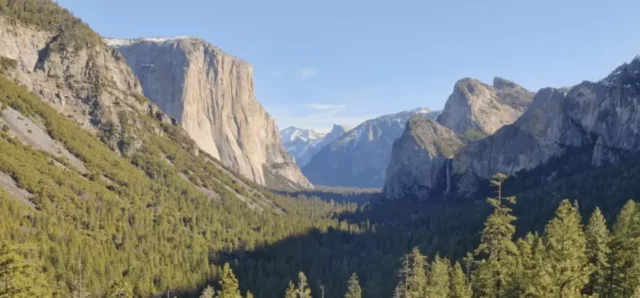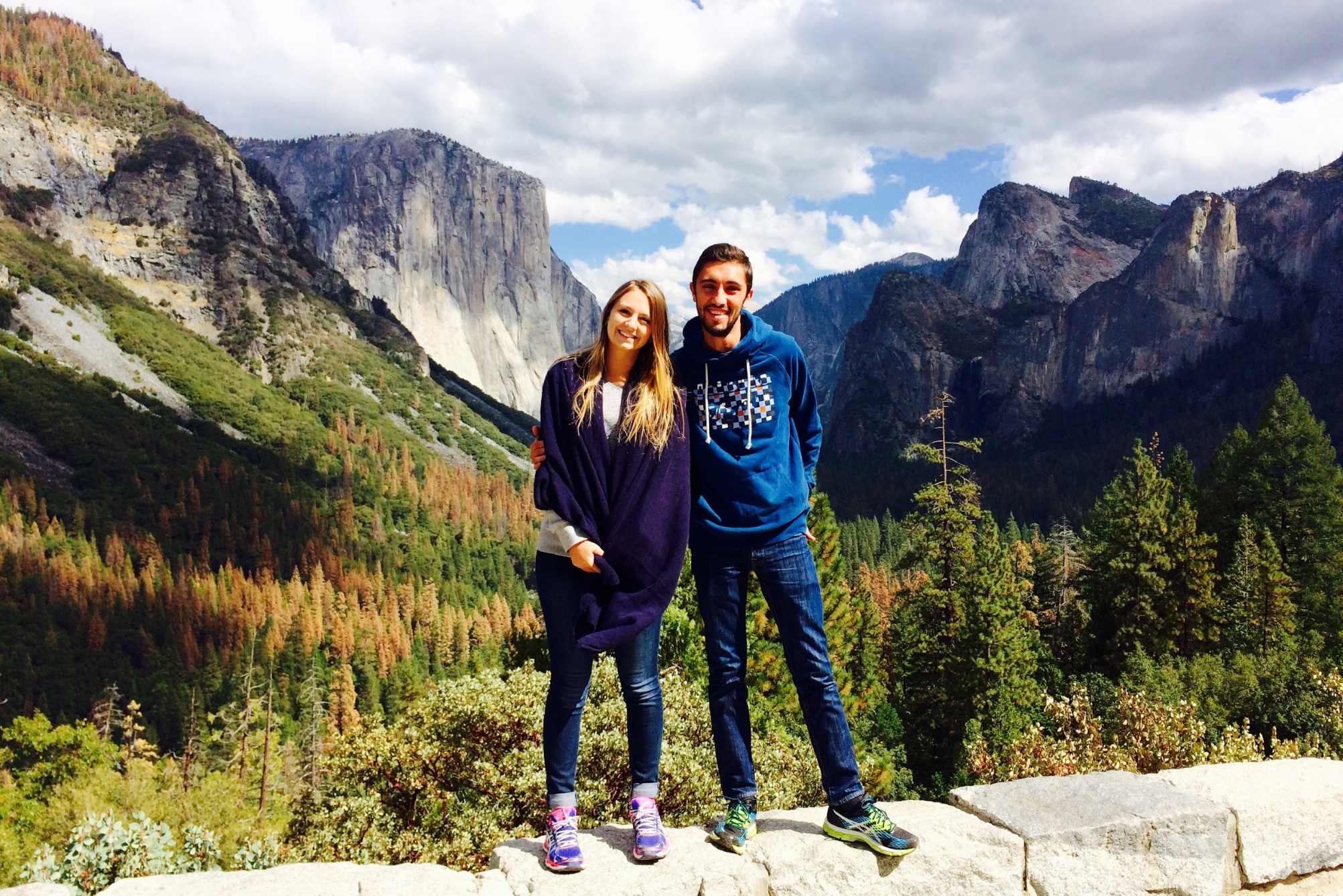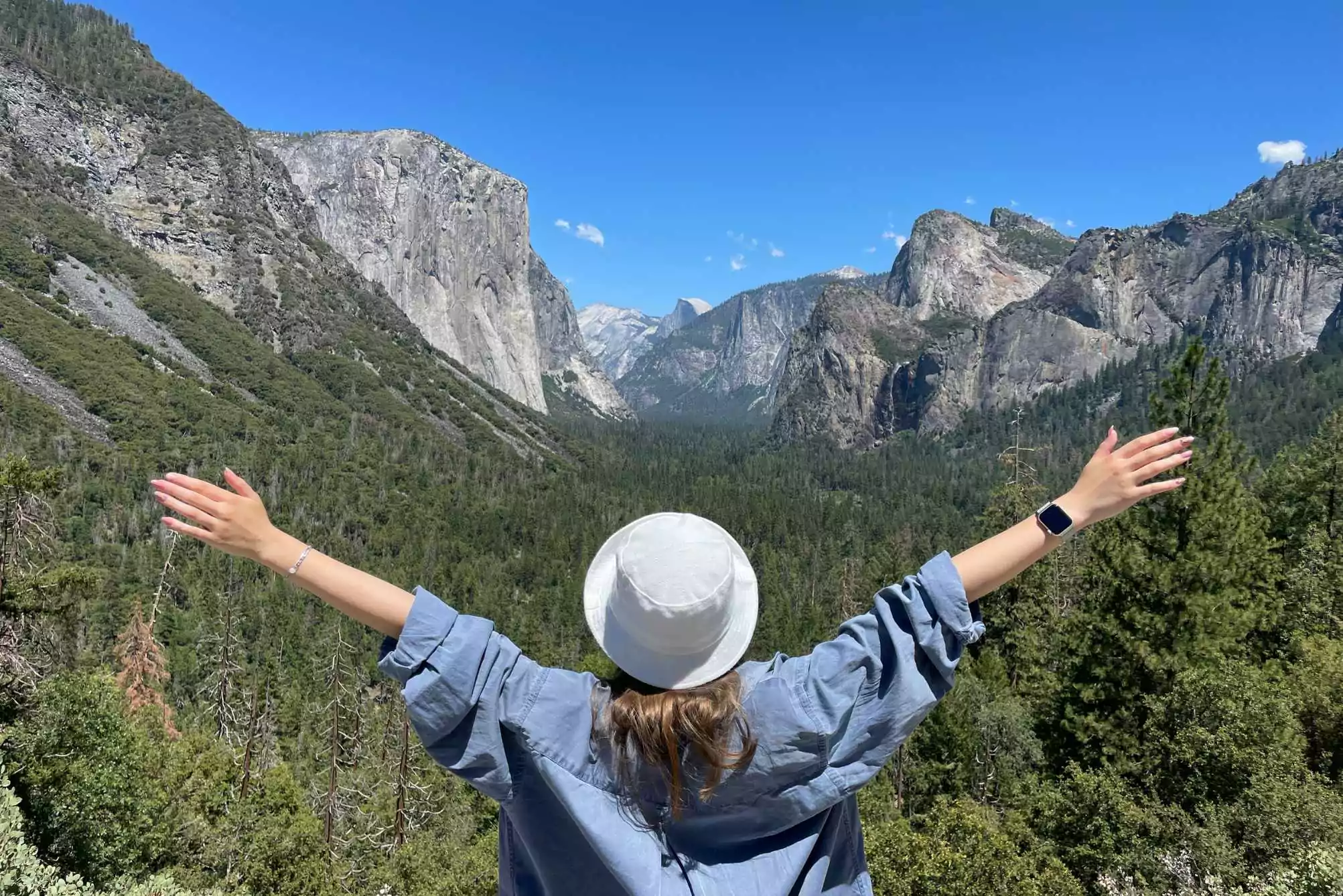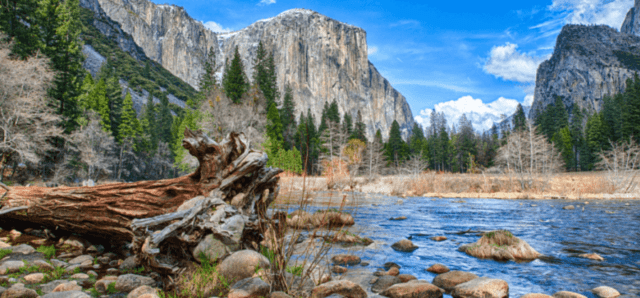El Capitan Yosemite National Park

El Capitan is a 3,000-foot-tall, 1.5-mile-wide granite rock located in Yosemite National Park. This iconic monolith dominates the west end of Yosemite Valley. It is 2.5 times taller than Empire State Building and more than three times taller than the Eiffel Tower. One of the park’s most notable and most photographed landmarks, it is considered a mecca for climbers.
Interesting fact: El Capitan is the largest single piece of granite in the world, even larger than the rock of Gibraltar.

Yosemite and Giant Sequoias One Day Tour from San Francisco
The only 1-day Yosemite National Park tour from San Francisco to deliver more than you dreamed at Half Dome, El Capitan, Yosemite Falls, and on a hike to Giant Sequoias.

Yosemite Overnight Tour from San Francisco with No Accommodation
This Yosemite tour from San Francisco let’s you make your own overnight stay so you can slow the pace to experience Half Dome, El Capitan, Yosemite Falls and the Giant Sequoia redwoods.
History
The first people to inhabit Yosemite Valley were Ahwahneechee Indians, a part of the Miwok tribe. The valley was called Ahwahnee, or “Place Like a Gaping Mouth.” They lived by hunting in the Sierras, fishing in the Merced river, and harvesting more than 100 different types of plants.
In 1849 the Gold Rush had lured thousands of fortune-seekers into the Sierra Nevada mountains. El Capitan was discovered and named by the Mariposa Battalion in 1851 upon its exploration of the valley. Generally, it is believed that this Spanish title was a loose translation of the Native American name for the rock, Totokonoolah, translated as “Rock Chief.”
Geology
The mighty El Capitan started forming about 220 million years ago when the North American tectonic plate collided with the neighboring plate under the ocean. This forced the Pacific Plate beneath what is now California pushing magma to the surface where it crystallized into granite.
Interesting fact: Granite is known as one of the toughest natural materials. It is as strong as steel and twice as hard as marble.
Throughout tens of millions of years, the Merced River shaped the Yosemite Valley like a sculptor. Eventually, erosion carved El Capitan from the Sierra Nevada. About 3 million years ago, glaciers scraped out the valley floor during the last Ice Age, creating a final look for the famous monolith. About 2 million years ago, ice filled Yosemite National Park around 4000 feet deep. The downward movement of this ice carved the Valley into its distinctive U-shape.
Climbing El Capitan
El Capitan, or El Cap, has two faces: the Southwest and the Southeast. Between the two faces is a protruding shelf called The Nose. The Nose remains the most popular and famous route for climbers.
El Capitan was first climbed in 1958 by Warren J. Harding, Wayne Marry, and George Whitmore in 47 days. They used “siege” tactics, which meant using fixed ropes along the length of the route and establishing camps. The second ascent in 1960 took seven days. The first single-day ascent was accomplished in 1975.
Presently, The Nose challenges climbers of all experience levels. Some of the earliest routes for climbing El Capitan are still the favorites; Salathe Wall on the southwest face, and the North America Wall on the southeast face, both climbed in the 60s.
Initially, climbers stuck to only a few well-known routes. As time passed, trailblazers found new ways to ascend the rock, and today, there are over 70 routes up El Capitan. With that many paths, there is something to appeal to every level of experience and ability. Nowadays, climbers can climb with the help of pre-explored routes, ropes, and professionals who can offer aid and advice.
Climbing El Capitan is a time-consuming undertaking, and visits to the area for the purpose of climbing will take three to five days. Many climbers who reach the top of El Capitan can spend the night in a bivouac at the summit and enjoy their victory under the stars. Day climbers can return to a nearby bed & breakfast, or Yosemite Park motels to clean up and relax for the night.
El Capitan is a historic natural landmark and has hundreds of years of history behind it. Tales of danger and bravery pervade the massive granite outcropping, and visitors can feel a part of that history by climbing El Capitan like thousands before them have done.
You can learn more about climbing El Capitan HERE.

Best places to see El Capitan:
- Tunnel View. Iconic vista of Yosemite Valley that includes the western side of the cliff.
- Bridalveil Straight. View of El Capitan on your left as you drive into the Valley.
- EL Cap Meadow. Located at the base of El Capitan. Best place to see climbers in action.
- Valley View. Another great view of the Valley with El Cap on the left.
- Taft Point. Breathtaking view of the east side of the monolith and the whole Yosemite Valley.
Check out the beauty of El Capitan. Below is a webcam view of the El Capitan in Yosemite Valley.
El Capitan is a beautiful natural monument to visit, in the midst of a stunning landscape. It is a good option for a vacation spot. Visitors can’t go wrong with spending time at El Capitan.
FAQs
Can you hike up El Capitan?
You can hike to the top of El Capitan from Yosemite Valley. It is a 17-mile out and back trail that will take you 10-15 hours to complete. It is rated as strenuous and has a 2900-ft gain. Best time to go is April until October.
How tall is El Capitan in Yosemite National Park?
El Capitan is a 3,000-foot-tall, 1.5-mile-wide granite rock located in Yosemite National Park. It is 2.5 times taller than the Empire State Building and more than three times taller than the Eiffel Tower. And it is the largest granite monolith in the world.
Who has climbed El Capitan free solo?
Alexander Honnold completed the free solo climb of El Capitan on June 3, 2017. It took him 3 hours, 56 minutes. His climb was featured in a documentary called Free Solo.
Is El Capitan the hardest climb in the world?
El Capitan is considered to be one of the most difficult climbs in the world. Nearly 3,000 feet (900 meters) high, it attracts climbers from all over the world. This monolith offers more than 70 climbing routes but “The Nose” is considered the mega classic.
When can I see Horsetail Fall at El Capitan?
Horsetail fall occurs in the winter and early spring on the eastern side of El Capitan. During the sunset, the sun illuminates the waterfall and makes it glow red and orange. This phenomenon attracts hundreds of photographers every winter and is also known as “firefall”. The best month to see the Horsetail fall is around mid-February.
Is there parking near El Capitan?
For those who just want to bask in the glory of El Capitan, and try to pick out climbers on the face, the best parking is along the street adjacent to El Capitan Meadow. The fact that it’s nearly a half-mile from the base of the Nose takes nothing away from its majesty.